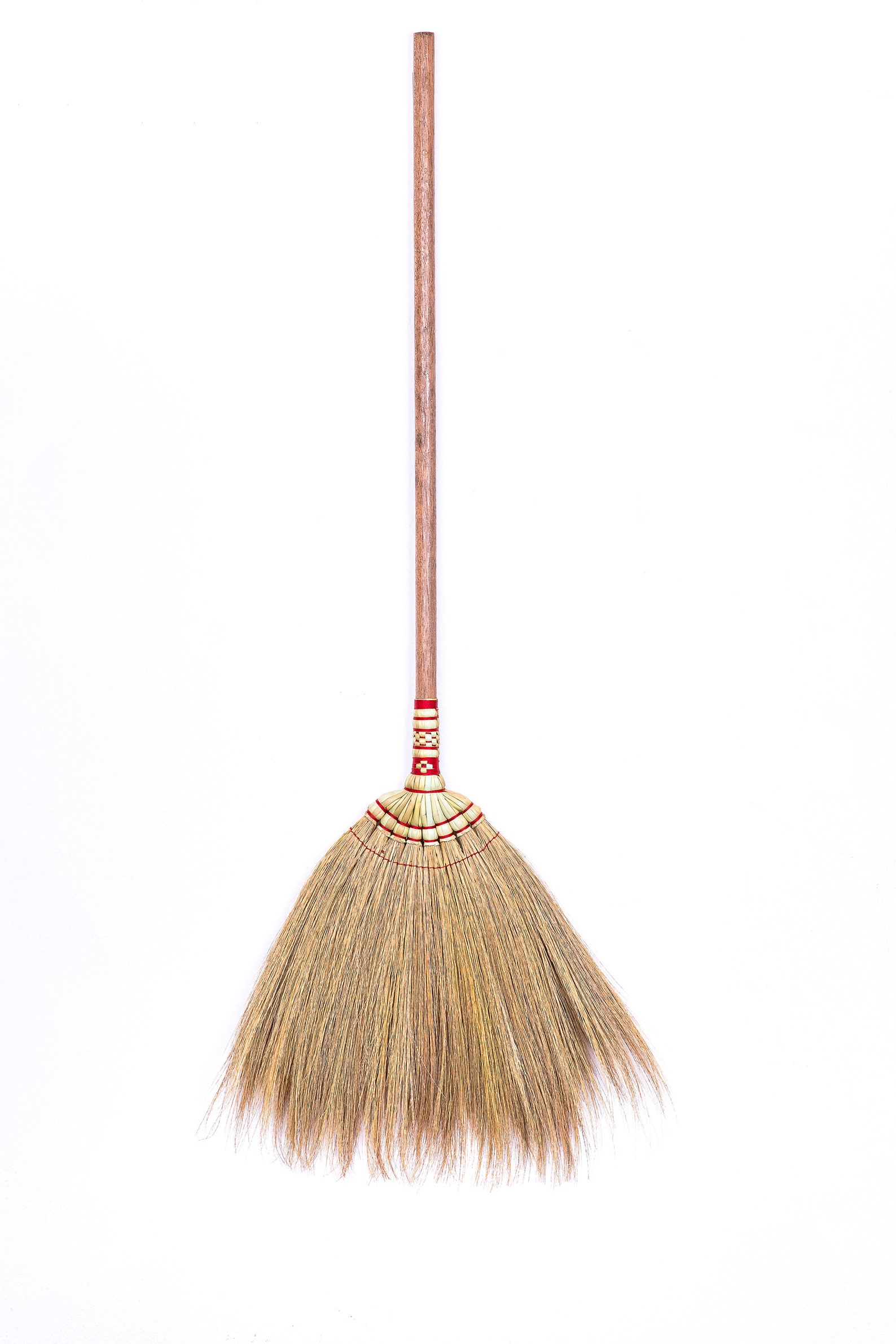

This drilled hole is where you’ll pass the string through to make that magic happen. If you want the straw to stay in place, you’ll need to tie it firmly onto the broom. Next, take your drill (with its 1/8th inch bit) and drill a hole through the handle about an inch above where it starts to taper sharply. This end is tapered so it won’t interfere with the sweeping motion. Then use that sharp knife or small hatchet to sharpen the opposite end. Take that broom handle of yours and decide which end you like better.

Once they’ve soaked, lay them out on a towel within easy reach. Then, soak them in a bucket of hot water for 10–20 minutes. Now, shake the bundles out thoroughly to get any dust, stray bits, or spiders out. If you want your broom to hold together for a good, long time, you’ll want to secure them very firmly. Finally, use a bit of twine to tie each bundle together tightly. Next, divide them into the aforementioned 10 bundles, all with the same thickness. Measure out the various lengths of broomcorn and cut them so they’re all the same size. 6-8 inch piece of leather or jute cord, any color you like.Long needle: Look for a straight, extra long tapestry or doll-making needle.Consider using different colors to add some brightness to your broom. Sturdy twine, cord, or string: I like heavy nylon cord for tying the bundles and waxed hemp string to sew with.Whether you leave the bark on or take it off and sand everything smooth is up to you. Alternatively, you can use a sapling or thick branch from the forest. For a standard kitchen or household broom, aim for a 36 to 48-inch handle. A broom handle: You can buy 1 1/2 or 2-inch diameter dowels at the hardware store or look specifically for broom handles online.Aim for about 2.5 to 3 lbs for your broom. The longer the broomcorn (or straw), the larger the broom will be. At least 14 one-inch-thick bunches of straw or broom corn, at least 16 inches long.

If you’re aiming to create a beautiful-yet-efficient broom, collect the materials listed below. That said, it might not be ideal for getting cat hair out of your kitchen. Don’t get me wrong: a well-tangled besom made of ivy would look great in a witch’s cottage. Basically, they’ve used whatever can be used to collect dust and detritus from the corners so it can be collected and taken out the door.įor the sake of aesthetics, most people like their house brooms to look tidy and neat. People have made them from various types of plant matter, simply tied to a stick. Ultimately, however, brooms can be made of whatever you have on hand. It has a long, thin, sturdy stem that’s ideal for making brooms, which is how it earned its common name. As you may have guessed from its botanical name, the latter is a member of the sorghum family. The most common materials used to make brooms are straw or broomcorn ( Sorghum vulgare). These essential implements are both easy and fun to make at home and you can use materials that are cheap or even free. A home without a broom will have a messy floor indeed! Today, you can buy them – but why not make a broom yourself? Our distant ancestors made brooms to sweep out their cave dwellings, and you can rest assured that castles and manor houses had brooms as well. You’re likely to find a broom in pretty much every home on the planet.


 0 kommentar(er)
0 kommentar(er)
